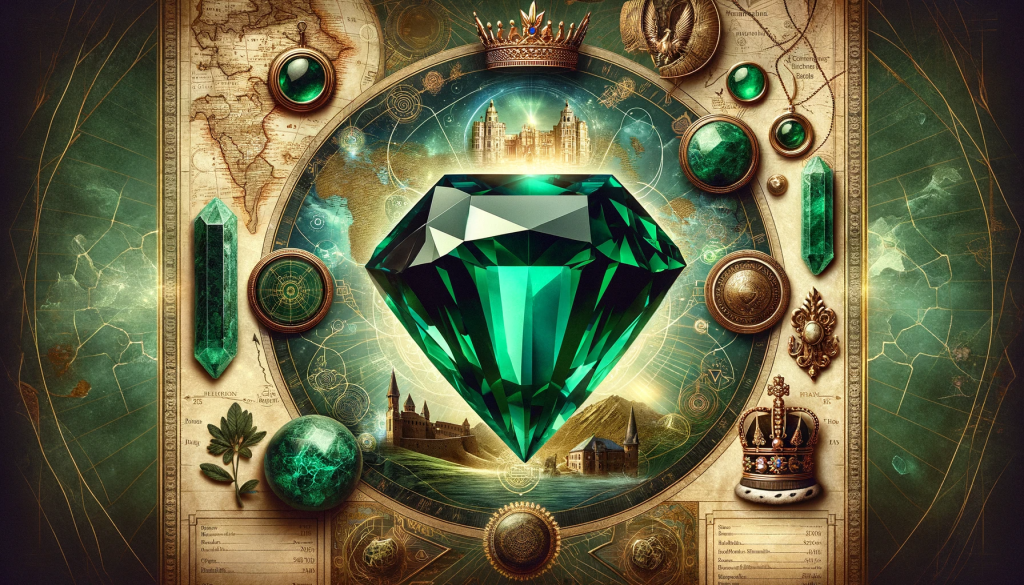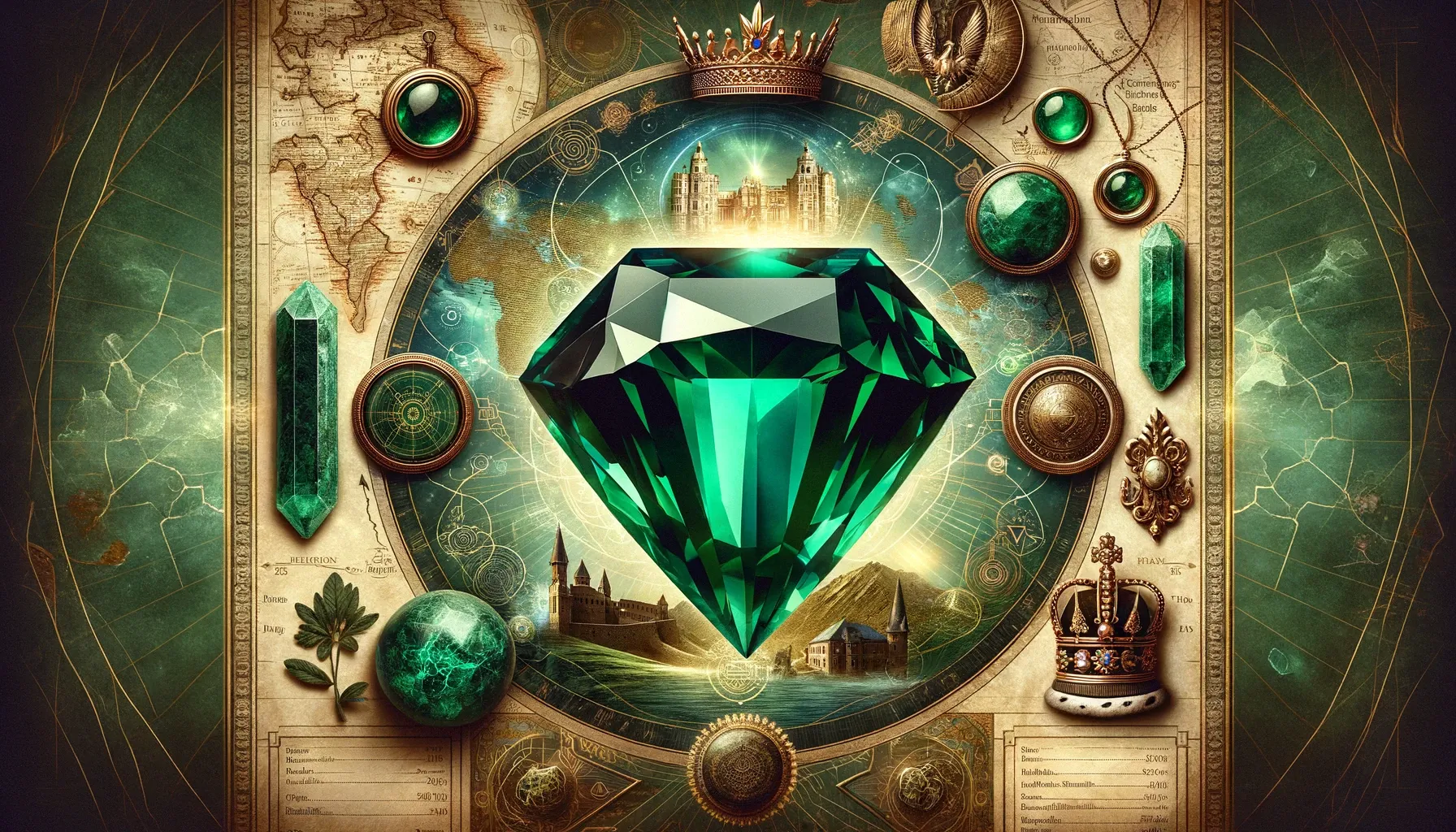In the introduction to emeralds, it’s important to note that emeralds are a specifically colored green variety of the mineral species beryl, with the chemical formula Be3Al2Si6O18. This species also includes many other varieties. The characteristic green color of emeralds is due to trace amounts of chromium or vanadium. There are several types of emeralds, each with unique features and origins.
Brazilian Emerald: These emeralds are generally yellowish-green and are known for their clarity. They show a less deep green compared to their Colombian counterparts but are renowned for their clarity due to their lighter tone, allowing more light into the stone.
Zambian Emerald: Emeralds from Zambia are typically bluish-green and cooler and darker in tone than Colombian and Brazilian emeralds. They may contain certain inclusions, like flakes of minerals, but are desired for their unique ‘moody’ appearance.
Colombian Emerald: Colombian emeralds are highly sought after and typically have a warm emerald hue, balancing between bluish and yellowish green. They are known for having fewer fractures and inclusions and are often considered the rarest and most valuable.
Cat’s Eye Emerald: This variety shows a unique optical effect called ‘chatoyancy’, which appears as a glowing line through the stone. It is caused by aligned inclusions and can be found in emeralds from various global deposits.
Lab-Grown Emerald: Created in laboratories, these emeralds are chemically and optically identical to natural emeralds. They are formulated to be equivalent in hue, saturation, and purity as Colombian emeralds but are more accessible in terms of price.
Natural emeralds are those that formed through geological processes in the earth, and most on the market are treated to enhance clarity, typically using oil or resin. These treatments are standard practice and widely accepted in the industry.
The value and appeal of different types of emeralds vary based on their origin, color, clarity, and other factors. Colombian emeralds, for instance, are often the most prized for their unique color and clarity, while Zambian and Brazilian emeralds have their distinct qualities that make them desirable in different ways

The History of Emerald Stone
Emeralds have a storied past that intertwines with human history, culture, and art. Known for their mesmerizing green hue, these gemstones have been cherished and sought after for millennia.
Tracing the Origins: Ancient Civilizations and Emeralds
The history and cultural significance of emeralds are both rich and diverse, spanning several civilizations and eras. These gemstones have been revered and coveted for their beauty and rarity for centuries. The origins of emeralds can be traced back to ancient Egypt, around 4,000 years ago, where they were first discovered and mined. The Egyptians believed in the powerful protective properties of emeralds and used them in amulets, jewelry, and even placed them in the tombs of pharaohs.
In ancient Greece and Rome, emeralds were associated with the goddess Venus and were valued for their beauty and rarity. Pliny the Elder, the Roman naturalist, described their beauty in his work, Natural History. During the Renaissance, emeralds symbolized wealth and power and were a popular adornment among the rich and famous. The Spanish conquistadors brought emeralds from South America to Europe, where they quickly gained popularity among the aristocracy.
In modern times, emeralds continue to be a favorite gemstone among the rich and famous, with celebrities like Elizabeth Taylor and Angelina Jolie known for their love of emerald jewelry. These gemstones remain popular among collectors and investors, with some of the most valuable gems fetching millions of dollars at auction.
Throughout history, emeralds have been imbued with various spiritual and cultural beliefs. Many cultures believe in their healing powers and use them to treat various ailments. They are also thought to enhance intuition, wisdom, and spiritual growth. Famous emeralds, such as the Mogul Emerald and the Duke of Devonshire Emerald, have captured the world’s attention due to their size, beauty, and history.
As the demand for emeralds continues to grow, there are increasing concerns about the sustainability and ethical issues surrounding the gemstone industry, particularly in developing countries where labor practices can be exploitative, and the environmental impact of mining can be significant. Initiatives are underway to improve the industry, focusing on responsible sourcing and ethical practices.
The deep green color and natural beauty of emeralds continue to allure people, making them a timeless symbol of luxury and elegance. Their rich history and cultural significance only add to their value and appeal.
FAQs About Emerald
Real emeralds have unique characteristics such as natural inclusions, or 'jardin,' and specific refractive qualities. A jeweler or gemologist can perform tests, including examining the stone under a microscope or checking its specific gravity, to determine its authenticity.
Some of the most famous emeralds include the Mogul Emerald, the Duke of Devonshire Emerald, and the Bahia Emerald. These emeralds are renowned for their size, history, and the legends surrounding them.




